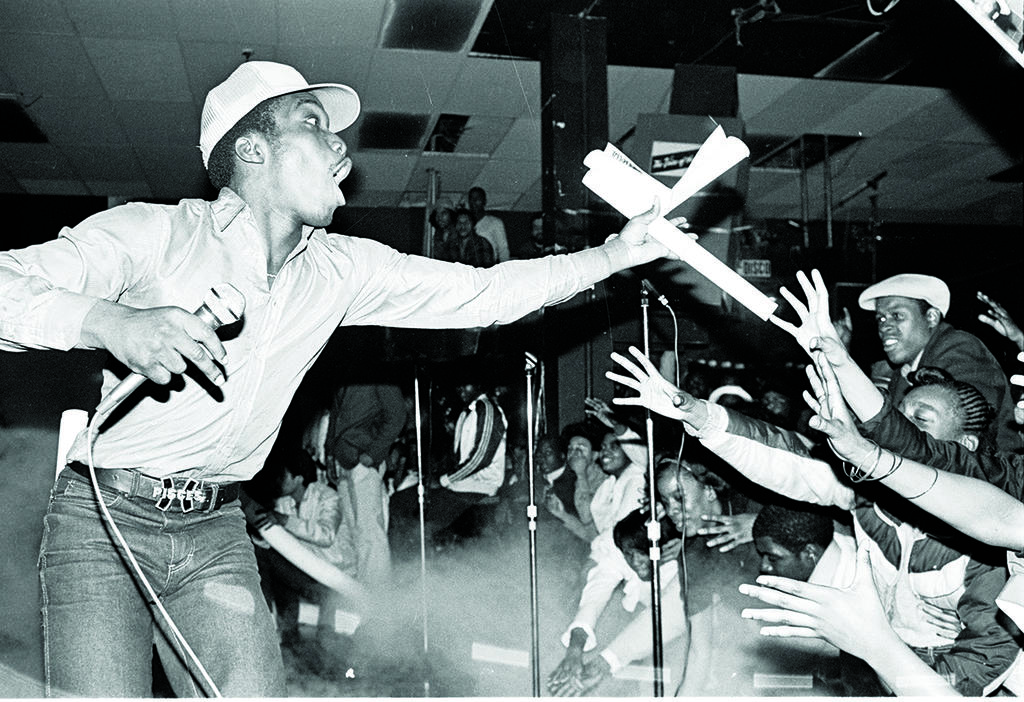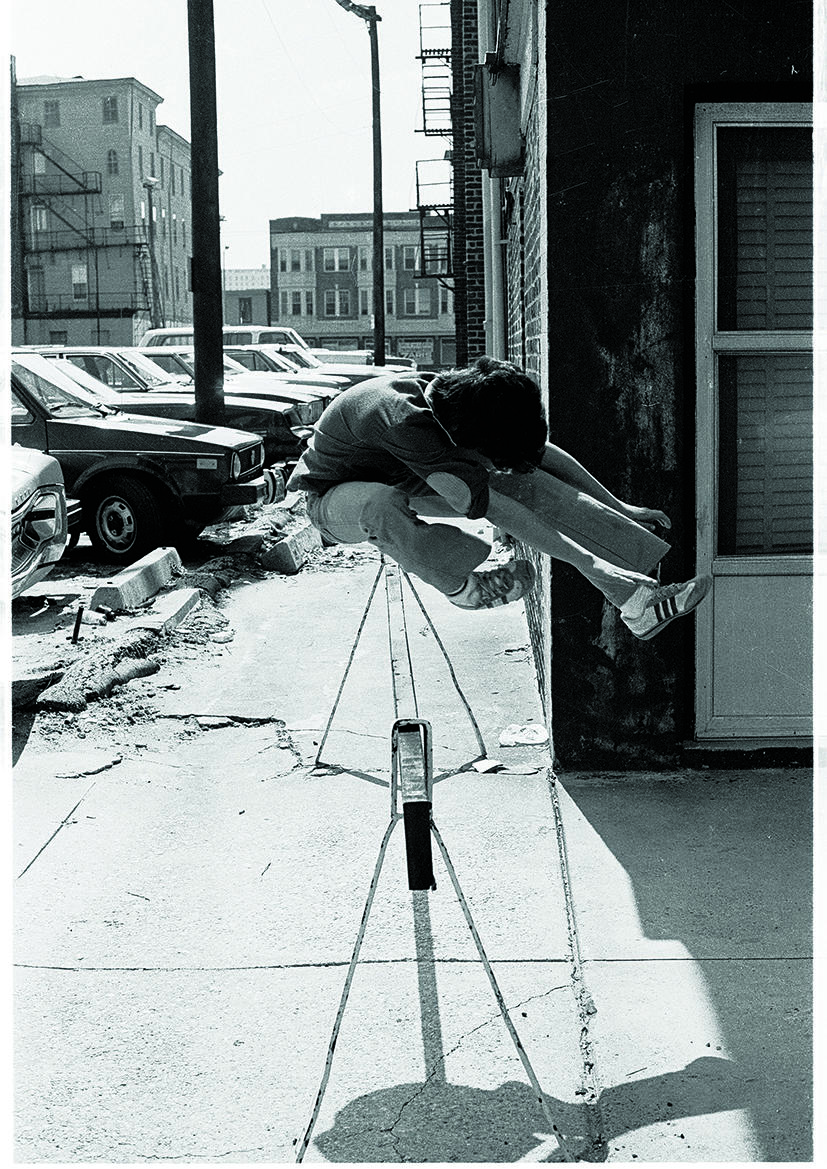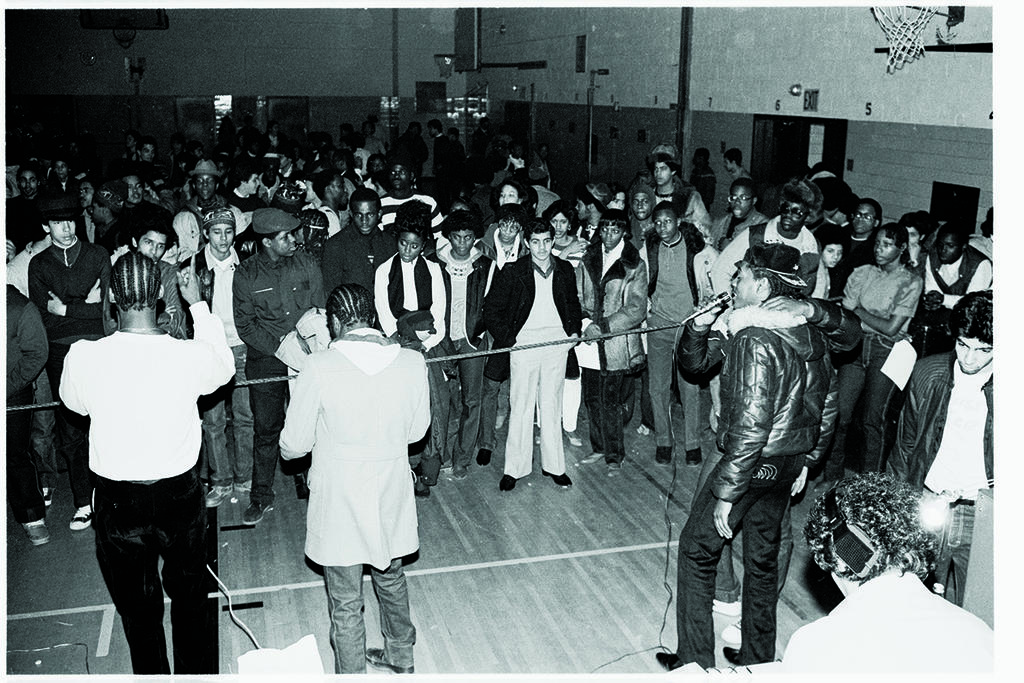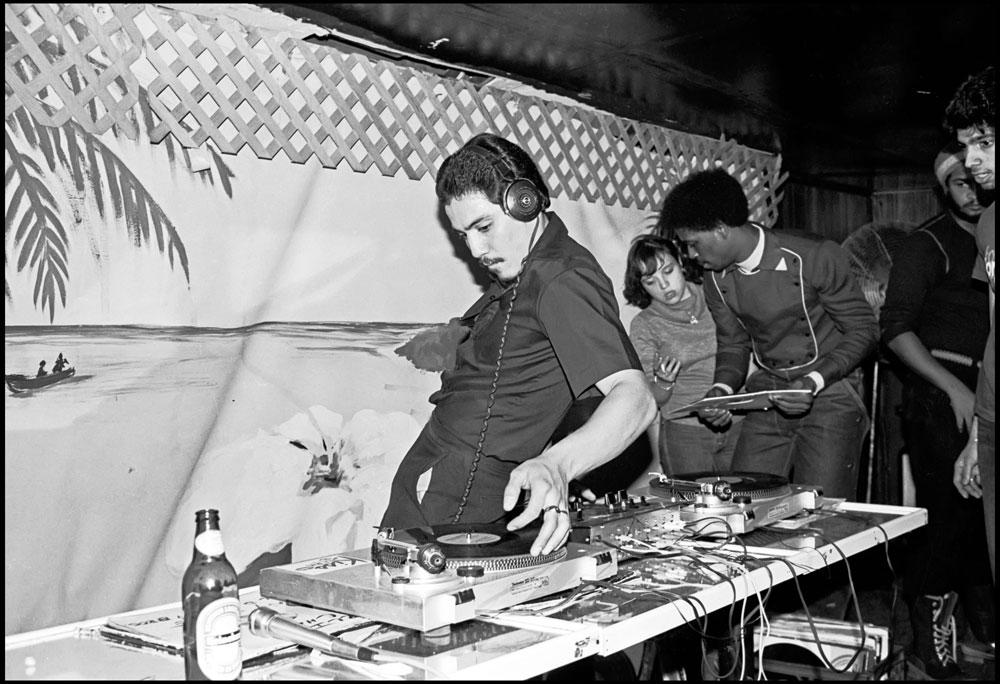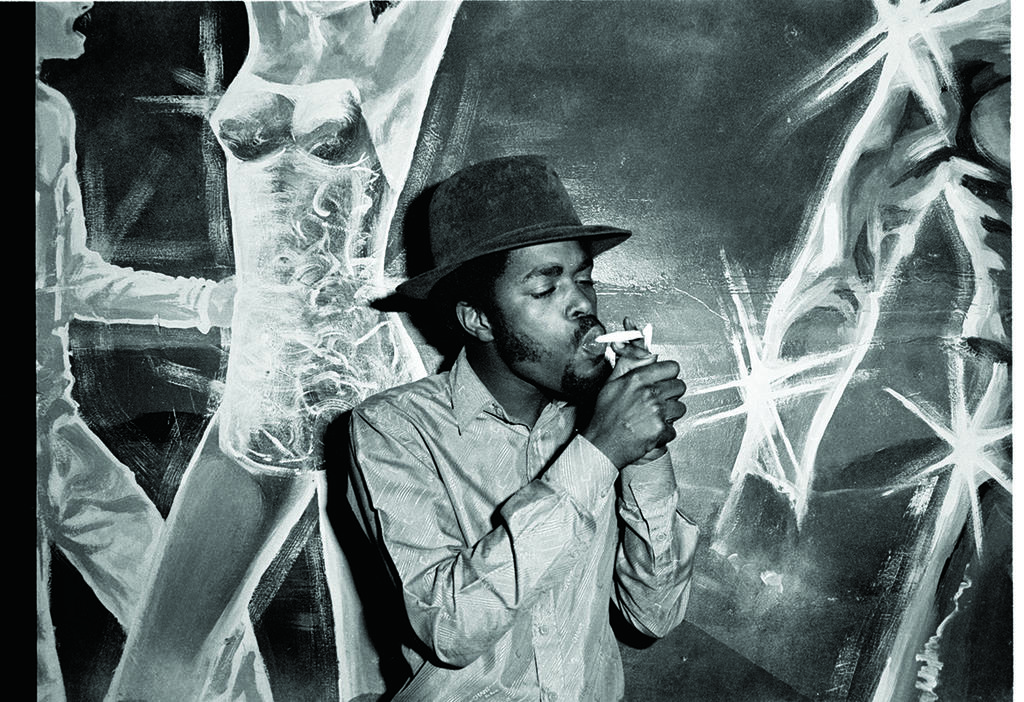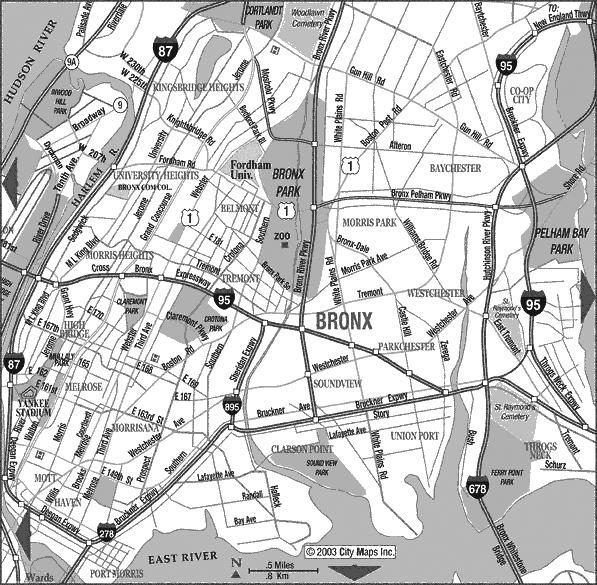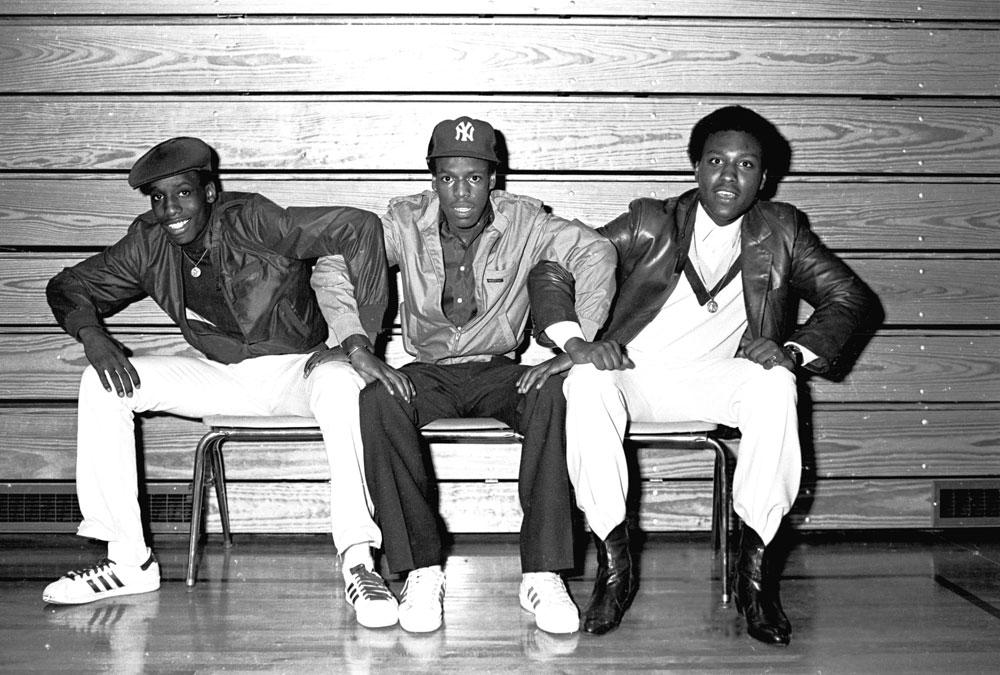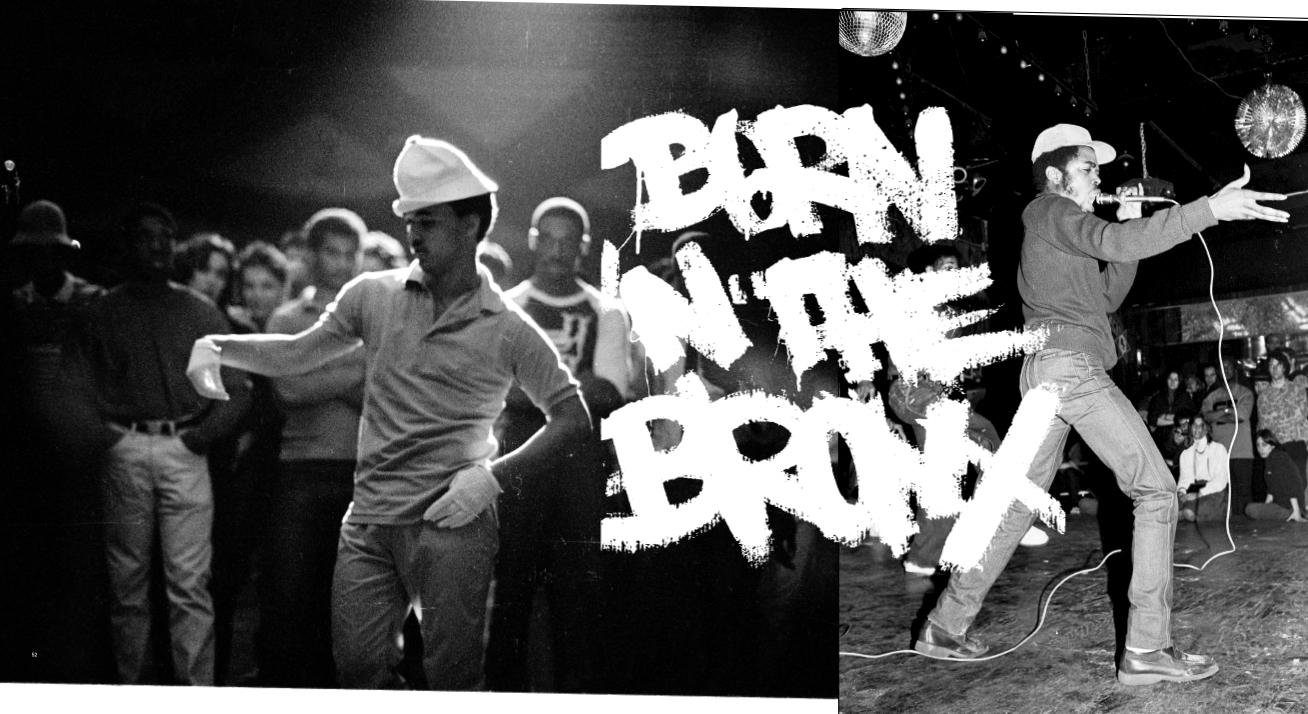
The Photographs of Joe Conzo
Martha Cooper and Henry Chalfant, Jamal Shabazz and Ernie Paniccioli - they all have been described as the “first hip hop photographers”, but the guy who really started it all and was there as a teenager with his camera to capture the Bronx’s up-and coming hip hop culture and street life in the mid/late 70s and early 80s was a man called Joseph Conzo. He was friends with one of the first real hip hop groups, the Cold Crush Brothers, and through that connection, he got to meet and photograph the likes of Grandmaster Flash, DJ Kool Herc, Afrika Bambaataa, the Funky 4+1 and many other rap pioneers. In the mid 80s he went missing in action and for years he fought with drug problems, but in the early 90s he cleaned up, became active in Narcotics Anonymous and started working as an emergency paramedic. Only a few years ago he went through his old negatives that had been kept safe in his grandmother’s house and the resulting pictures were recently exhibited in his first ever solo show, together with the original flyer artwork by the master artist of the hip hop showflyer, Buddy Esquire, and some of the earliest hip hop records. In order to celebrate this worthy occasion the 42-year old Joseph Conzo brought with him to London two of the original Cold Crush Brothers, Tony Tone and Charlie Chase, both 46, who proved that 25 years on from the Cold Crush Brother’s heyday they can still rock a jam in style and get people to boogie down like it’s the Bronx.
Joe, where did you grow up in the Bronx and how and when did you get into taking pictures?
Joe Conzo: "I was raised in the South Bronx near Yankee Stadium. I picked up photography as a hobby, you know. I was a chubby little kid with a big afro and walking around with a camera, girls just love having their pictures taken, so that’s how I picked up photography. I was fortunate enough and blessed to go to school with Tony Tone over here and EZ AD. I was the school photographer and I was taking pictures of a basketball game one day and Tony grabbed me and said ‘Listen, I’m into music, I have a little group that I’m putting together and I’d love you to come down and take pictures’. I said ‘Sure’. I thought maybe I can take some pictures and make a few dollars, I’d heard of the Cold Crush Brothers and that’s how I started taking pictures of them and followed them everywhere, from state to state, borough to borough and community centre to everywhere. The rest is history, but I didn’t know at the time that I had been documenting hip hop in its infacy, but here we are now 30 years later, showing my photographs.”
What’s the story of the Cold Crush Brothers? How and when did you come together?
Tony Tone: “In the early 70s I started working in a record shop, age 12, 13. I started learning music and DJing with an older group, Unity Productions, you know just going around with the older cats, learning music, DJing with my friends for a dude named Doc Soul. As time went on I then joined ‘Breakout&Baron’ with Brother’s Disco. I maybe was into for 6, 7 years, ventured of and we started the Cold Crush Brothers. From being in hip hop with ‘Breakout&Baron’ I saw the flaws and wanted to fix them when I put my group together, so we started with a set of MCs and we just developed from there. But I wanted to have the whole picture and that’s why I asked Jo if he wanted to take pictures of us. I met Tapemaster and I saw that he was a dedicated person that wanted to record, so I asked him to come with us and record everything we did. So we later on got to the point of being the Cold Crush Brothers and 30 years later we are still here.”
Charlie Chase: “I literally grew up all over the Bronx man. I lived in 15 different places, from the South Bronx to the North Bronx. When I met Tony Tone I was living on 180th and Arthur Avenue, that was where we met through an MC that I had, his name was RC, he lived in Tony’s building. So we all got together and as we were first playing together, this is even before Cold Crush would start of yet, we had gone through a few MCs already, and then Caz was always a friend of mine and I always wanted him as an MC but he had his thing going on on the West side of the Bronx, but then I saw an opportunity because I knew he wasn’t doing as well as he’d have liked and I knew I could do better on the MC tip, so I convinced Caz into joining and so we formed the Cold Crush Brothers. AD and KJ were already with us and when Caz came on board he came with JDL and I knew that Caz was the missing element in what we were looking for. I was a musician, I’d been on stage for years, performing and playing instruments in salsa and funk bands, so I already had a lot of experience on stage and Caz had that stage presence as the front guy, the front man and that’s what we were missing. I knew that if I brought Caz along, that we were gonna start something new, that we were gonna be on our way to something big. I knew it, I didn’t know exactly what it was, but I knew it would be big and today you have it, the Cold Crush Brothers. We actually only broke up recently last winter after 30 years.”
What was the atmosphere like back then in the Bronx, could you feel the excitement that something new was happening, because those were the really early days of hip hop?
Joe Conzo: “For me the early days of hip hop in the late 70s and early 80s, it was an innocent time. We were young, we were teenagers, we were in our own elements, trying to make a statement about what we were doing. Gangs at that time ruled the Bronx and if you weren’t part of a gang you were pretty much lost in terms of identity and stuff but along came this movement, this hip hop movement of music, breakdancing and graffiti, all combined. I was just fortunate enough to be part of that generation that wanted to make a statement, you know, socially about what we were doing in the streets. It was an innocent time, it was a good time and it was a fun time, and my contribution to that, you know I’m not a MC and I couldn’t DJ, so my contribution was taking pictures. Taking pictures of these guys was great, I hung out with them, I got to hang out with the groupies and stuff, but they made me a Cold Crush Brother also and so whenever we went somewhere people knew that I was down with the Cold Crush. It was a good feeling because the guys had such a reputation back then, such a reputation, you know with no radio play, no albums, it was just unbelievable, you know packing Harlem World. Harlem World was a famous venue in Harlem which you hear rappers today sing about, like Jay-Z and Nas, I mean they were too young to even go into this establishment, but this establishment held 500 to 1000 people and these guys packed these venues all the time. All the time!”
Tony Tone: “At the time we really didn’t have no park situation to play in and stuff like that. I was part of a gang called the Undertakers, it was the Undertakers, the Javelins, the Turbans, the Black Spades, the Black Spades which later became Zulu Nation, so to come from being in a gang and then to go into hip hop, to come from the negative and get into a positive thing, was something cool. I started hearing about Kool Herc and my older brother took me to a club called the ‘Hevalo’. I was a year too young to be in there, but I was taller than my older brothers, so they had to show their IDs and they let me in without asking for ID. When I was stepping in there it was like stepping out of one world into a whole new world. Herc was playing stuff that I wasn’t hearing on the radio. I had never heard these records and it really grabbed me to hear Edda James and Bob James and I stood by the DJ booth, peeping over, watching Herc and I said to myself ‘I must find these records’. So I’m doing the record hunting, finding these records and I’m listening for them on the radio, but they aren’t playing them on the radio, so I’m like ‘Okay, I’ve got to follow this guy Herc’. The next time I see him, Herc was at this event called ‘Super DJs’ and I walk up behind him and I just stand there and I can feel an aura around the guy that’s so strong. I said to myself ‘This is something that I want to be into!’ I was already a graffiti writer and I tried breakdancing, but I picked to be a DJ and I just went into it. It was like I was reborn, and you know, the way I felt about hip hop then is the same way I feel about it now.”
Charlie Chase: “I came from a whole completely different world. I came from being in a salsa band and in latin-rock and funk bands. I was a musician and I had just started DJing and when I got a glimpse of what was happening with hip hop at the time, to me it was just opening up a whole new avenue, it was just something new. It was different and what I liked about it was that it wasn’t a mainstream thing where you had to listen to a whole song, it was just the beats. You were just playing hours and hours of funky breaks which was exciting to me, you know, because just the mechanics behind DJing, that was what turned me on. I guess I’m an electronics nerd, I love everything electronic, so when I saw the Monterey crew, they were some of the first guys I saw doing it, DJing back and forth with these breakbeats. That’s it, I was captured. From that day on I told the guys in the disco group I was with, ‘This is what I want to play from now on!’. After a year hanging out with them I had enough confidence to go on my own and I did it.”
‘Wildstyle’ was obviously very important because it was one of the first hip hop movies that spread the word about hip hop to the rest of the world. Did you guys realize the importance of ‘Wildstyle’
Tony Tone: “From day one, being part of hip hop, I always looked at it as something that would grow immensely. I never took it as something that kids were just doing around the block. I always tried to think of it as something that was going to spread. 80, 81 we were the first group to use smoke machines, we was very advanced stage-wise and entertaining-wise. We spent our own money to make our show and even though it was on a street level we made it look like real entertainment and a lot of the times we’ve been classified as the ‘Temptations of rap’ and stuff like that and it’s because we really respected what we were doing and we worked on it.”
Joe, let’s go back and talk about your photography. What was the first camera you used?
Joe Conzo: “My first technical camera was Minolta SRT 201, a single-lens reflex camera, you know. That was my first camera and from that I graduated into the Nikons, the Nikon F’s. But I tell you about one of my highlights taking pictures of the Cold Crush Brothers, that was seeing one of my first photos on a flyer. You’ve got to understand something, the Cold Crush Brothers were so advanced in terms of public relations and getting the word out about them, I can honestly say that they were one of the first groups to put pictures on flyers of them. That was one of the highlights, seeing hundreds of flyers being made up announcing a gig, a party coming up with my pictures, you know, pictures by Joe Kane, which is what they used to call me back then. Other highlights were ‘Wildstyle’, you know I’ve got pictures of the groups rehearsing for ‘Wildstyle’ and if you look in the movie you see a chubby kid with a big afro taking pictures – that’s me. Just travelling with them was great, just the respect and the fame you could feel, those were my highlights.”
Tell me about the early flyers, they were really hand-made pieces of art and Buddy Esquire was the grandmaster of the flyer, wasn’t he?
Joe Conzo: “Buddy Esquire! I’d heard so much of Buddy and I just met Buddy for the first time maybe two years ago. Here we are, him working on all these flyers and the Brothers here giving Buddy all my pictures to put on the flyers, but I never got to meet Buddy. When I first met him a couple of years ago he said: ‘You’re Joe, what I remember about you is that every time I was given one of your photos by the Brothers, the first thing they said was ‘Make sure to put Photo by Joe Kane’. So yeah, that’s Buddy, but the first flyer, there’s so many there. But that was my claim to fame back then, being associated with the Cold Crush, you know people would walk up to me and go ‘You’re Joe, you’re the one who’s taking these pictures’. Another highlight for me too was sitting in the movie theatre one time, watching the Chris Rock movie ‘CB4’ and the first 30 seconds of this movie is one of my photos of the Cold Crush Brothers, you see it real big with the credit ‘Photo by Joe Kane’, that blew me away to.”
Charlie Chase: “I was surprised to see that, too.”
Tony Tone: “At the time I saw it, I happened to be incarcerated and I was sitting there in the crowd of my brothers and we’re watching TV and this movie starts and all of a sudden this photo pops up. I just sat there, smiling to myself because nobody realised who I was, so I was just sitting there and smiled to myself.”
How did you progress from being the Cold Crush Brothers in-house photographer to taking shots of all the other hip hop pioneers like DJ Kool Herc, Grandmaster Flash and Afrika Bambaataa?
Joe Conzo: “You’ve got to understand something, the Cold Crush Brothers were at their peak and they were so well known. Through my travelling with them I was introduced to the Kool Hercs, Afrika Bambaataa, DJ RedAlert, Chief Rocker Busy-Bee, DST, all these pioneers, and I was fortunate enough to photograph them also along with the Cold Crush Brothers. Besides me taking pictures of hip hop, I did other stuff. My father was Tito Puente’s manager at the time so I got to travel around with my father taking pictures of Tito Puente, Hector Lavoe, all the salsa superstars of the 70s and 80s, so I was fortunate enough really but I carried my camera with me everywhere I went. That’s why you see some of the street shots of the environment that I lived in. I just loved taking pictures and people loved having their pictures taken.”
Tony Tone: “And for Joe to be a Cold Crush Brother, you know every pioneer respected him like they respected us, he was a Cold Crush Brother and they welcomed him like he was family.”
Joe: “It’s like saying that clichée ‘Oh, I’m with the band!’. Well, I was with the band.”
Charlie Chase: “He wasn’t an arsehole, because if he was an arsehole he wouldn’t be sitting right here. Basically, we had a lot of friends but it wasn’t easy to get into our circle, talent wasn’t enough and if you were an arsehole, then you could just stay away.”
Joe Conzo: “My role was more than just being a photo-grapher, I was their friend and I can remember dozens of occasions getting vans so we can go to the next venue and bringing my friends with vans so we can pack up Tony’s equipment. I referred one or two of their managers, that’s how we were, we were family and whatever access we had amongst each other, we just brought it into that circle.”
Tony Tone: “It was like a family. Buddy Esquire was a graffiti writer that I wrote with. He wrote Phantom Two and when it came to the early flyers I knew Buddy could do a better job, so I brought him in as a flyer maker and that’s when our flyers went from here to here - the quality changed over night and he got respected as one of the top flyer makers. There were certain things that I saw, that I felt that I can bring to hip hop, that would elevate it, so everybody that I knew in my circle, I tried to bring in.”
After that early hip hop boom in the late 70s and early 80s, what happened to you guys, all of you kind of disappeared, so how did your careers continue?
Joe Conzo: “I never really stopped taking pictures. I put down the camera for a while because of some personal demons I was going through at the time. I pursued a career in the army but I have always been taking pictures. It wasn’t until recently in the last two or three years that I picked up the camera again and started taking pictures on a regular basis. I rediscovered my love for photography in the last couple of years. We have always been in touch with each other. There have been times when we’ve gone a year or two without seeing each other, but we’ve always been in contact and more so in the last year or two with the resurgence of old school hip hop, you know homage that’s been paid.”
Tony Tone: “I don’t look at it like stopping, because 365 days I’m living hip hop and I’m trying to do something that’s hip hop orientated or whatever. If I’m working with the kids, if I’m going to prisons talking to people about going to high schools, talking to them about hip hop culture and the positiveness of hip hop, ahm, trying to help people distinguish between hip hop culture and rap, you know I’m gonna always be a Cold Crush Brother, and I’m always gonna be hip hop, so I don’t look at it as I stopped doing it or anything like that. I lost a couple of fiancées for hip hop, so I’m married to hip hop.”
Charlie Chase: “Forever we will be Cold Crush Brothers, that’s gonna follow us to the day we die, you know what I’m saying, because we helped opening a lot of doors for a lot of people and because of that they show us respect and love in return. They always remind us of what we’ve done and how we affected them in their lives, so yeah, that’s always gonna be there.”
So today’s rap generation recognises you and gives you the props where props are due?
Charlie Chase: “It’s the most amazing thing that always hits me: I will go to a country that I’ve never been to in my life, okay, and when I land and I step off that plane, I have friends, people who come there to greet me and show me the town and take me in. It’s a great feeling, it’s hard to describe. You have strangers that you have never seen in your life and they are willing to open their doors to their homes for you, that’s a great feeling.”
Tony Tone: “I enjoy meeting everybody because I want to actually see the real person. As we met Eminem he showed us his real side and we just accepted that. As we met Kid Rock he showed us a different side where he showed a lot of love and respect. Nas, Nas showed a lot of respect. It’s not that we are looking for respect but we understand that if they were no beginnings it wouldn’t be at where it’s at now. We are not looking for no hand-outs or anything, we are still DJing, we are still travelling, we still can do it, and a lot of younger performers and artists they don’t understand the foundations of hip hop culture and they don’t understand what they are projecting to the world. They are not projecting hip hop culture, they are not projecting hip hop, they are projecting maybe 20 per cent of what it is. Once I was in Amsterdam someone said to me ‘Listen I enjoy when the pioneers come here, because they don’t separate themselves from the crowd. They walk through the crowd, they talk to people, they are open, they want to share hip hop with the people’. You know a lot of younger artists they want to be behind the velvet rope and want to be in the VIP area separated from the people, but that’s not what it is all about. It is about us sharing our lives with the world so we can try to show people the positiveness of life and share our inner soul in the music form with everybody. We want everybody to enjoy life and to understand that life can be enjoyed so we try to share a part of us with the people.”
Hip Hop is very inclusive today, and it’s the same with certain graffiti artists and rappers – they feel they are too special to talk to the normal kids…
Tony Tone: “…it’s true, a lot of the new graffiti writers, when I run into them and say ‘What about Stay High, what about Jive 3, what about FDT?’ They sound like they don’t know about them and that they don’t matter, but they’ve got to matter. All them guys I wrote with, you’ve got to show them respect. That’s the same thing with rap. These younger guys have got to appreciate us because without us there wouldn’t be hip hop like it is. Like Theodore said ‘How can you know where you’re going if you don’t know where you’ve come from’.”
Your photography has been around for a good 30 years now Joe, why only now, that you’ve got your first ever solo show?
Joe Conzo: “Why now? Why not now? My pictures have appeared in many books and movies without credits and that’s okay but today I have taken some control, if not total control of my archive and my photography. I had a sort of grassroots exhibition at the Chamberg Library in Harlem, and I was part of an exhibition called ‘Hip Hop Roots – Impacts and Origins’ where they showed a couple of my photographs and then I was part of a show called ‘Free - The Hard Way’ with two other famous photographers, Jamal Shabazz and Ernie Paniccioli, who is called the ‘Godfather of hip hop photography’, but this here ‘Born In The Bronx’ is my first solo show.”
Which is weird, because your pictures were there before Henry Chalfant’s or Jamal Shabazz’ photography…
“…being a photographer I looked up to the Henry Chalfants, Martha Coopers and Jamal Shabazz’ because these are the people who had their work published in books and stuff. But here I had something to contribute to that and Henry is a dear dear friend of mine who has taken me under his wing and so have Ernie and Jamal, and to hear these guys say that ‘Joe is the first hip hop photographer because Joe’s work is a few years before our work’ is just a blessing, it’s awesome.”
Tony Tone: “You have to understand, when Joe came in, Joe was a kid. He wasn’t a young adult like they were when they started taking pictures, he was a kid. All of us were kids and we didn’t have any adult supervision, we was just doing it, improvising, going through life learning, making mistakes as we went along the way. Joe was 16, so it wasn’t like he had a plan or he was doing it for the profit. He was doing it out of the love of photography and what was going on.”
Text&interview: Goetz Werner

